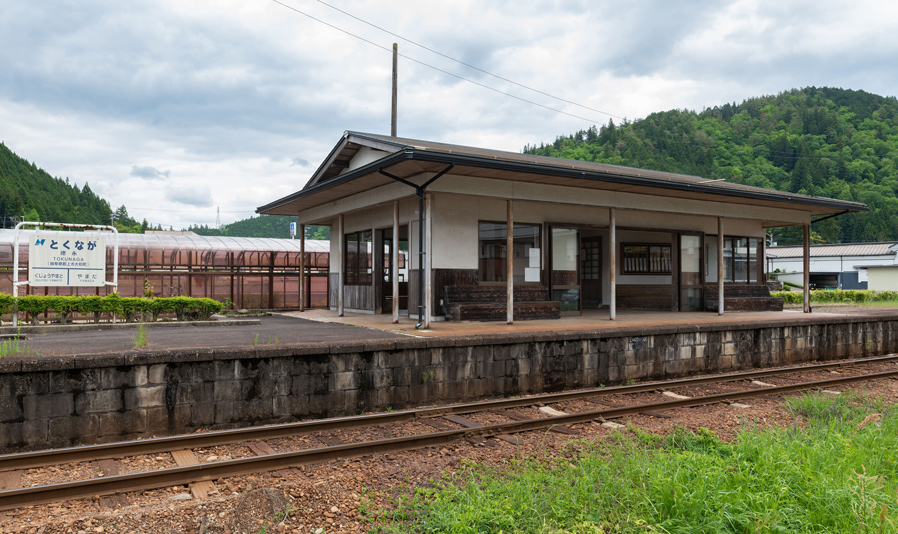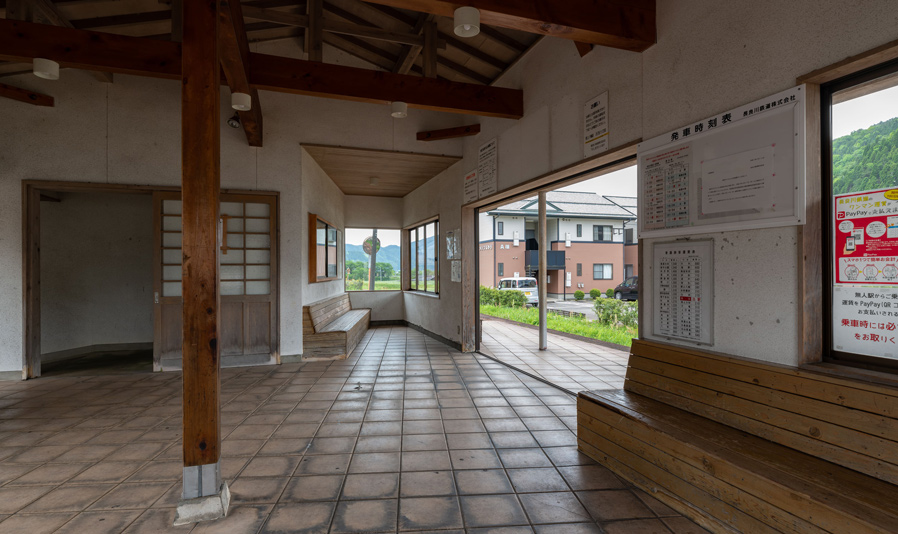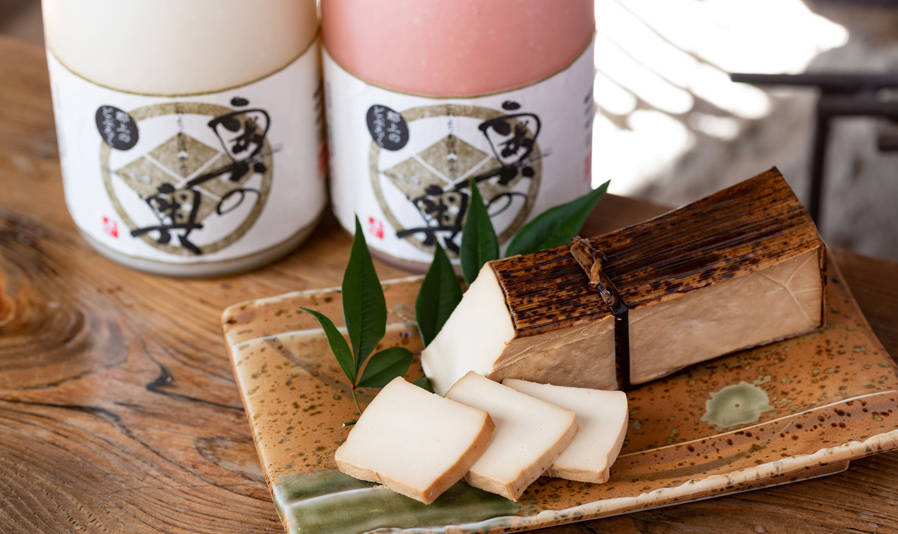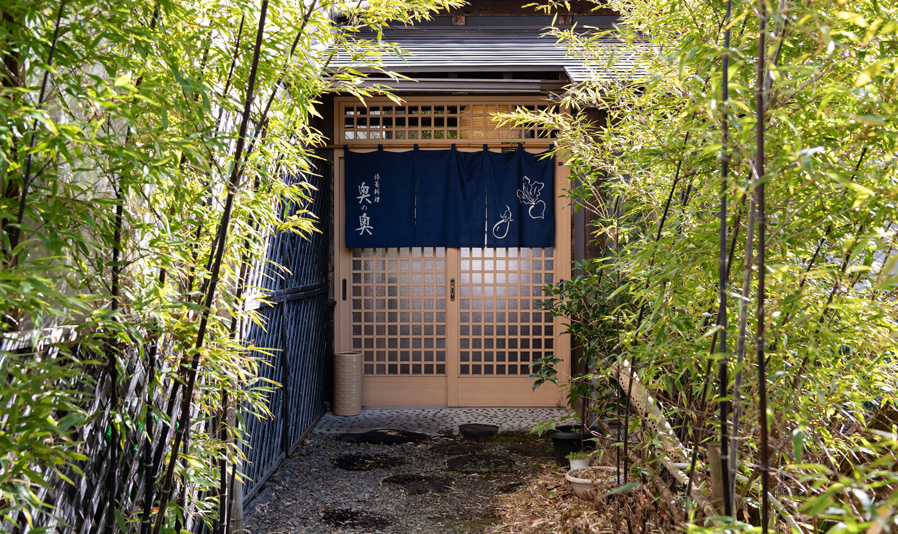Visiting Kokindenju-no-sato Field Museum and Wine Brewery
A trip to find local Japanese sake
“Bojoh” and stroll around Kokindenju-no-sato
Take Nagaragawa Railway to find delicious Gujo local sake! We are going to know more about the history and culture of Kokindenju-no-sato. After visiting the sake brewery, we are going to have some tofu cuisine. Let us start our trip of “The taste of Gujo”!
 5 min.
5 min.
 5 min.
5 min.
 15 min.
15 min.
 15 min.
15 min.
Nagaragawa Railway Tokunaga Station
Take a train to find local Gujo Yamato sake!
Tokunaga Station of Gujo-shi Yamato-cho is a small station north above Gujo Hachiman Station. There are toilets and vending machines inside the station. Wooden poles and benches are placed spreading a nostalgic atmosphere.

Tokugana Station is an unmanned station of Nagaragawa Railway.



There is a bicycle parking lot in front of the station but no parking area for vehicles.



Toilet is inside the station.
Hirano Jozo Brewery
Sense the culture of Gujo Yamato
At a brewery producing local sake Bojoh
Hirano Jozo is a brewery established in 1873. One of their most famous local sake is called Bojoh, using the local water from Kokindenju-no-sato. They have started growing their own rice “Gohyakumangoku” for brewing sake since 2019. They focus on using 100% local Gohyakumangoku for Bojoh Junmai Ginjo. You can try the sake in the shop. Please come and find your favorite sake when you are travelling in Gujo Yamato.
* If you want to visit the brewery, please make a reservation before you come.


A tank containing water from local Kokindenju-no-sato. They use it for preparing and washing during production.


You can reservation by phone if you want to visit the brewery. Opening day is also held once a year.


Junmai Ginjo, Daiginjo and super dry are all available for tasting.
Kokindenju-no-sato Field Museum
Toshi Memorial Hall, Waka Literature Hall, Tanka-no-sato Koryukan Yobukodori, Myoken-jinja Shrine
Sakura in spring and red leaves in autumn
An outdoor museum in nature
Kokindenju-no-sato Field Museum is an outdoor museum with the theme of Waka (Japanese poem) with the name of Lord To who was the root of Kokindenju. and Lord To, while Toshi-yakataato-teien is designated to be one of the National Scenic Beauty. You can see the changes of scenery throughout the year. Seeing all the mountains, birds, small animals and plants is also one of charming point! You can also see lines of lovely cherry blossom in Myoken-jinja Shrine next to the museum in spring.


Enter the world of Waka and have a nice time at the museum.


Kokindenju-no-sato Field Museum is filling by red leaves in autumn.


Cherry blossom trees along the path to Myoken-jinja Shrine is very famous.
Oku-no-oku & Motai Workshop
Only insider knows
Tofu cuisine & Doburoku of Yamato at Oku-no-oku
Restaurant Oku-no-oku and Motai Workshop making Motai Iburi-tofu (Smoked tofu) were opened at Gujo-shi Yamato-cho during Kamakura era (1185 – 1333). Oku-no-oku is providing tofu cuisine using local ingredients. Menu changes every seasons. Wild vegetables and river fish which are both representing the culture here are provided. If you want to try the sake together with food, we recommend you try Doburoku (Home-brewed sake) by Oku-no-oku. Tofu and sake are also good for souvenir!


Motai iburi-tofu of Motai Workshop and Doburoku of Oku-no-oku.


Enter this gate and find the taste of this place.


Sitting beside the fire is flavorful.
Nagaragawa Railway Tokunaga Station
Take a train to find local Gujo Yamato sake!
Tokunaga Station of Gujo-shi Yamato-cho is a small station north above Gujo Hachiman Station. There are toilets and vending machines inside the station. Wooden poles and benches are placed spreading a nostalgic atmosphere.



Tokugana Station is an unmanned station of Nagaragawa Railway.



There is a bicycle parking lot in front of the station but no parking area for vehicles.



Toilet is inside the station.





